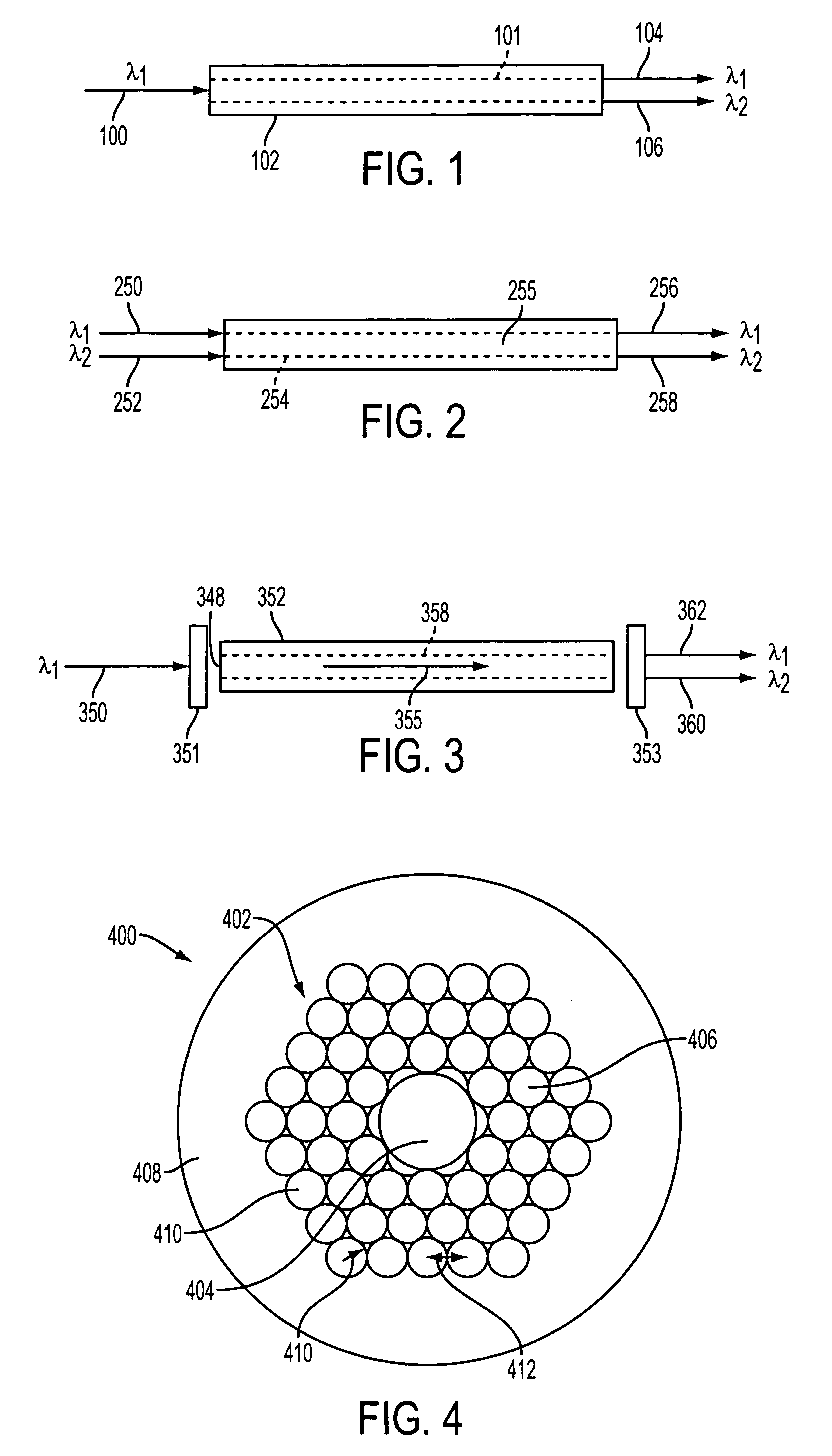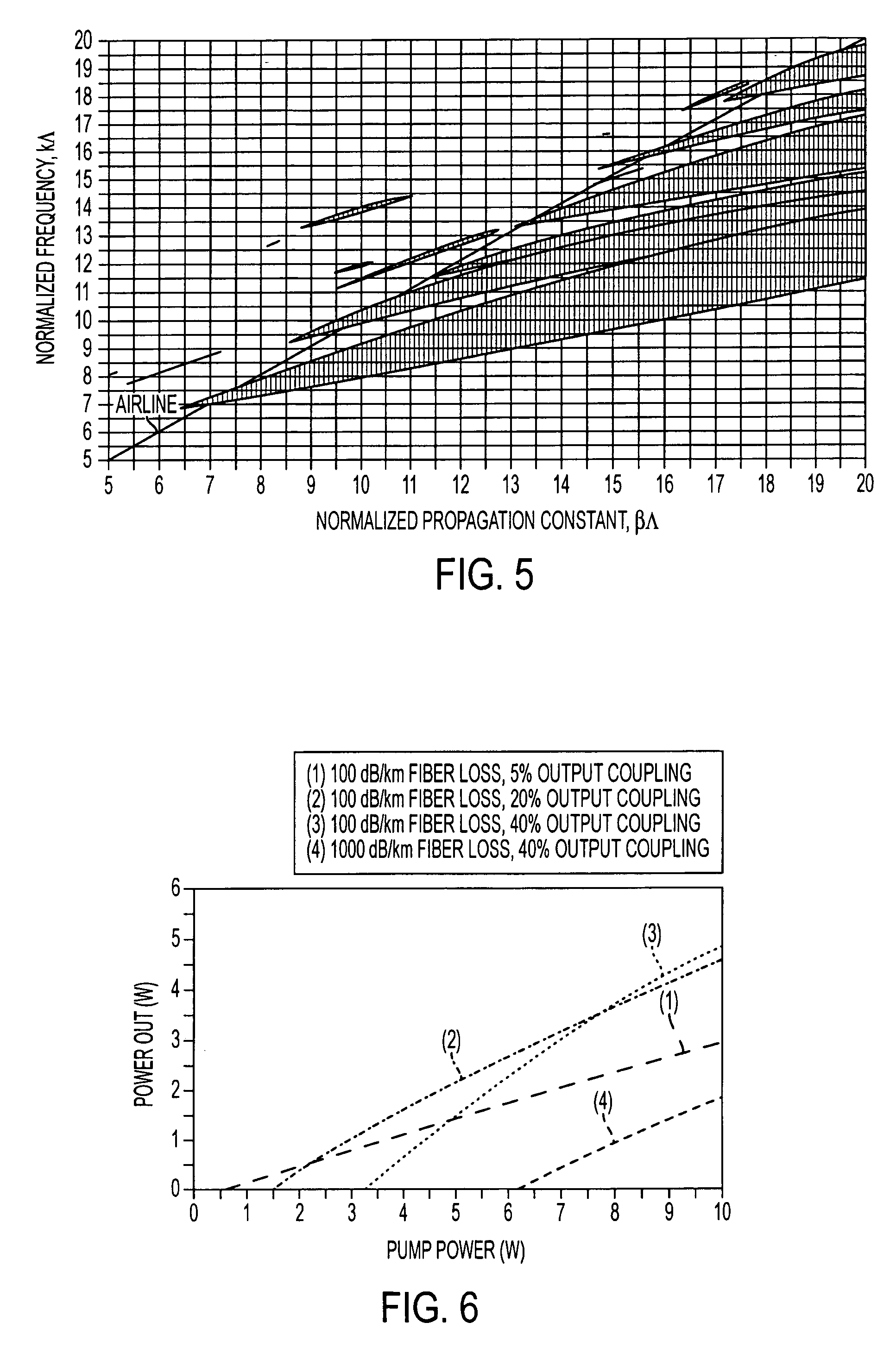Gas filled hollow core chalcogenide photonic bandgap fiber raman device and method
a technology of chalcogenide and hollow core, which is applied in the field of gas filled hollow core chalcogenide photonic bandgap fiber, can solve the problems of high peak power, in kilowatts, and still necessary to reach threshold, and achieve high efficiency, high efficiency, and high raman cross-section
- Summary
- Abstract
- Description
- Claims
- Application Information
AI Technical Summary
Benefits of technology
Problems solved by technology
Method used
Image
Examples
example
[0047] The use of hydrogen iodide (HI) gas filled arsenic selenide (AsSe) Raman photonic bandgap fiber laser is demonstrated in this example.
[0048] The hollow core gas filled Raman laser included a chalcogenide glass photonic bandgap fiber, cross-section of which is shown in FIG. 4, where the structured region 402 is 90% gas-filled with hydrogen iodide, an active Raman gas, contained in the fiber core. The hydrogen iodide was sealed in the arsenic selenide photonic bandgap fiber by silica capillary tubes which were capped with dielectric mirrors coated for appropriate wavelengths—high transmission at pump wavelengths and high reflectivity at the Stokes wavelength at the pump launch end and partial transmission at the Stokes wavelength at the input end. Inside of the hollow core photonic bandgap fiber was evacuated and backfilled with hydrogen iodide gas using the capillary manifold at the output end. Hydrogen iodide gas has vibrational Stokes shift of 2230 cm−1 and pump wavelength ...
PUM
| Property | Measurement | Unit |
|---|---|---|
| diameter | aaaaa | aaaaa |
| diameter | aaaaa | aaaaa |
| thickness | aaaaa | aaaaa |
Abstract
Description
Claims
Application Information
 Login to View More
Login to View More - R&D
- Intellectual Property
- Life Sciences
- Materials
- Tech Scout
- Unparalleled Data Quality
- Higher Quality Content
- 60% Fewer Hallucinations
Browse by: Latest US Patents, China's latest patents, Technical Efficacy Thesaurus, Application Domain, Technology Topic, Popular Technical Reports.
© 2025 PatSnap. All rights reserved.Legal|Privacy policy|Modern Slavery Act Transparency Statement|Sitemap|About US| Contact US: help@patsnap.com



